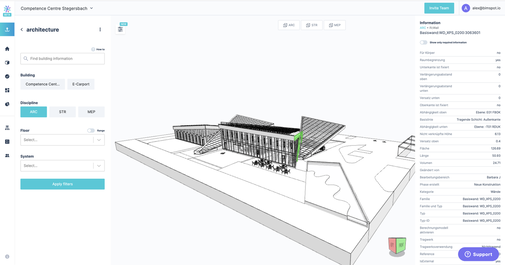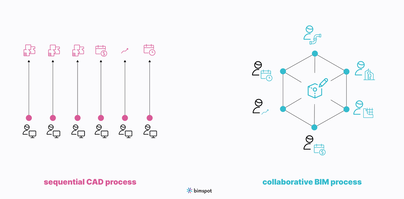|
In our last article we discussed actions to take if your construction project is losing money. Read: Is Your Construction Project Losing Money? In this article I some of the causes which result in construction projects losing money. These include: # Poor productivity due to: •Poor supervision. •Low worker morale. •Incorrect resources on the project - the wrong type or too few os some and too many of others. •Production bottlenecks. # Theft: •Direct theft on the project. •Suppliers and subcontractors claiming for stuff they did not deliver or work they have not done. .Suppliers short delivering. # Material wastage due to: •Breakages from poor handling and installation. •Storing materials incorrectly. •Large quantities of off-cuts. •Over ordering materials. •Applying materials thicker than they should be. # Ordering items that are the wrong specification. # Non performance of suppliers or subcontractors. # The project not completed on time. # Poor quality work. # Not invoicing the client for work done. # Over payments of subcontractors and suppliers: •Paying invoices twice. •Forgetting to deduct discounts or previous payments. # Not claiming variations and delays that you are entitled to claim, such as: •Additional work. •Change in specifications. •Delays and disruptions. .Client not fulfilling their obligations. # A poor price estimate due to errors, not understanding project site conditions, wrong rates, not understanding the contract. Ensure your construction project does not lose moneyContractors regularly lose money on their construction projects. This could lead to the contractor going bankrupt. Nobody likes to do work for free or lose money on projects. Simple checks and sound project management can eliminate many of the causes of project losses. Of course it is important to have systems in place - project cost reports which are accurate - which give an early warning to project managers when their construction project is in trouble. Knowing immediately that the construction project is losing money enables the project manager to take early action to prevent further losses and possibly even recover some of the lost money. It is important to identify the real reason for project losses and not leap to the wrong conclusion and blame others - like the estimator - for the loss. Do you want to learn how to manage construction projects successfully?Paul Netscher has written several easy to read books for owners, contractors, construction managers, construction supervisors and foremen. They cover all aspects of construction management and are filled with tips and insights.
The books are available in paper and ebook from most online stores including Amazon. © 2020 This article is not to be reproduced for commercial purposes without written permission from the author.
1 Comment
Your project is losing money. Do you know why? Do you blame the estimator? Do you blame your crew? Do you blame the weather? Do you hide the losses from your manager? Do you shout and threaten those working for you? Do you hope things will improve? Do you run away? Do you look for the real reasons? When a project is losing money it is important to:
Do you want to learn how to manage construction projects successfully?Paul Netscher has written several easy to read books for owners, contractors, construction managers, construction supervisors and foremen. They cover all aspects of construction management and are filled with tips and insights.
The books are available in paper and ebook from most online stores including Amazon. © 2020 This article is not to be reproduced for commercial purposes without written permission from the author. Is your construction company busy? Do you have enough work to keep all your construction crews busy? These are challenging times with Covid-19 impacting most countries and disrupting people's lives and livelihoods. The construction industry faces a number of challengers, including a possible decrease in growth which will increase competition making it harder for contractors to find work. How can you improve the chance of your company finding and winning new construction projects? How will your construction company get through these troubled and disrupted times? Whether you are a construction company owner, a project manager, supervisor, craftsman, or even a general worker, these are scary times, and the thought of losing your company or your job is probably keeping many of you awake at night. It is up to everyone to keep your construction company busy. And yes, you can all make a difference as we will discuss below! Who is responsible for finding new construction projects for contractors?Now many think the responsibility of finding the next construction project for the company lies with senior management. But, it’s everyone’s responsibility. Contractors with a good reputation are more likely to win new construction projects than contractors with a poor reputation. Good reputations are created by producing quality projects safely, on time and with minimal fuss to the client. A good reputation is created by working well with clients, solving problems, being proactive and being a pleasure to work with. It’s the responsibility of everyone in the company to create this reputation. It only takes one poor worker to destroy a contractor’s good reputation with their bad work and attitude. But of course winning new projects usually also requires your company to submit the cheapest price, or certainly a price which is competitive. How do contractors calculate the price of their work. Well usually it’s based on past experience. How productive were the crews on the last projects? How much material was wasted on the previous projects? How much did everything cost on the completed projects? So if construction crews worked efficiently on the last project then the costs on the project are lower, meaning that the price submitted for the next project is lower, which means that the contractor has more chance of winning the project. But if crews worked inefficiently on projects then the project costs increase, and if these same costs and productivities are used when the next construction project is priced it will inevitably drive the price of the project up and the contractor has less chance of their price being lower than the competitors’ prices. This jeopardises the contractor’s chance of winning further work. So it’s vital that everyone is productive and that materials aren’t wasted so that project costs are minimised. Not only will this ensure that the contractor is profitable but it will mean that the company wins more projects. But finding work is more than this. It’s about knowing which clients have new construction work coming soon. Knowing this enables management to visit that client, to sell the company’s capabilities to the client, to ensure that the company has the opportunity to price the project. Who gets to hear of these upcoming projects? Well anyone and everyone. Those working on construction projects are at the coal face and get to talk to subcontractors, suppliers and the client’s team. Anyone of these could know of prospective clients and upcoming projects. You and your team have friends and relatives in the industry. Everyone has connections. These connections could lead your company to their next project. So next time you’re at a family gathering, or chatting to friends over a beer, listen out for potential new construction works. Always be on the lookout for new projects and give the details to your manager to follow up. Advertising your construction companyConstruction companies usually also require clients to find them. Clients may see an advertisement, a website, or drive past a project that the contractor is working on. Maybe that construction project is your project. Is your project a good advertisement for your company. When a prospective client walks past your construction project what do they see? Do they see an organised and clean worksite that looks professional? Of course it doesn’t help if the project looks good but there isn’t a company advertising signboard or contact details of how they can contact your company. Remember to, prospective clients might not be looking for a contractor right now. They might have a project ready to price in six months or a year. Will they remember your company then. Well if your project was neat, tidy and professional and had clear bold signs with the company name, then they’ll probably remember your company and ask your company to price their project. What makes your construction project stand out? Well as I said, it should be neat and orderly, so no litter in the streets, clear signage and barricading, minimal disruption to the public. A big signboard that’s placed straight and level with the company name. Neat fencing or hoarding. The site should look safe, so barricading on the edges of elevated slabs is essential. But even your people are an advertisement for the company. Unfortunately they can also be a negative advertisement, harming the company’s image. If your workers clog the roads, fill the local lunch bars and shops, cussing and pushing, disrupting the general public, then people will get upset. Maybe one of those upset people is a prospective client who will remember your company for the wrong reasons, making sure they don’t ask your company to price their next construction project. Do you say good things about your company, or are you whinging and criticising management? Who is listening to you saying bad things or perhaps even telling people how your company is ripping off their clients? Possibly one of those in earshot is a prospective customer who will now give their project to another contractor. What are people in your team saying about the company? Is it a good place to work? Are they proud of the company? Are they portraying an image of a professional construction company? What are they saying about their supervisor and about company management – hopefully good things? Does your team have a company uniform with the company logo? Do they look professional? Or are they a ragtag bunch in a mismatch of torn and dirty clothing? Company equipment and vehicles are an excellent form of advertising – they are mobile billboards. Or are they? Well if the truck is bashed and scraped and dirty, what image does that portray of your company? If the driver of the vehicle is rude and operates the vehicle dangerously, or breaks the road rules, what does that say about your company? How many potential clients are your company vehicles offending? But, clean and new equipment with bold company logos are a good advertisement for your company. I’ve had clients compliment us on our shiny new equipment. Regrettably, I’ve also been criticised for items that continually broke on a project. Clients want to know that equipment working on their projects will be reliable and safe. Social media and construction companiesSocial media can be powerful. It can sell a positive brand or portray a negative image. Almost everyone operates a social media account such as LinkedIn, Facebook, Twitter, etc. The images and stories posted online often spread rapidly. Consequently, posting negative reports and pictures may be seen by both potential clients and prospective employees. While positive reports, ones that portray a good image of the company, a company with good people, impressive projects, good quality, new equipment, that takes pride in their work, that has good clients, and a company that looks after its people, will be attractive to both prospective employees and clients. There will be bad days when the company equipment broke, when your boss was annoying, or when head office personnel let you down. It’s easy to become annoyed with your company and fire off negative comments about the company. But, this can have consequences for the company which may impact your future. Be proud of the company you work for. You are part of a team. Tell everyone what a great company you work for and not only will the word get to prospective clients, but others will want to come work for the company. Good companies and good managers attract good people. Every construction company is desperate to attract the best skilled people. Good people make your job easier. Everyone must work together to secure the next construction projectContractors need a continuous supply of construction projects to keep their crews and equipment busy and to pay their overhead costs. Securing the next project cannot be left entirely to the estimators and senior management. In fact, even their best efforts could be for nought if some individuals damage the company’s reputation, or if the project crews are wasteful and unproductive driving up project costs. Securing the next project and continuing work is a team effort and it requires the cooperation of everyone. Everyone needs to be promoting the company and looking out for the next construction project. Securing the next construction project is vital to the survival of the company and it will help provide continued employment for many in the crew. Are you helping your company find and win their next construction project? Every employee is responsible for the success of their company. This article was first published on the ClockShark website. For construction and field service companies who want to get rid of paper time sheets, ClockShark is the GPS time tracking app that's both powerful and easy to use. Do you want to learn how to manage construction projects successfully?Paul Netscher has written several easy to read books for owners, contractors, construction managers, construction supervisors and foremen. They cover all aspects of construction management and are filled with tips and insights.
The books are available in paper and ebook from most online stores including Amazon. © 2019 This article is not to be reproduced for commercial purposes without written permission from the author. Outside the construction industry, almost every business sector uses reliable data for decision making and has thus achieved higher quality and efficiency. Sure, the life cycle of a building, with all the people involved around it, is enormously complex. But we have finally arrived at the third decade of the 21st century and it's on us to move our industry towards digitalisation. To gain advantage from new technologies, we have to say goodbye to analogue processes and old-school tools. The good news is that the building industry has already taken the first steps towards this big revolution with Building Information Modelling (BIM). What is BIM all aboutIn the past few years, our software tools have evolved from 2D, the pencil on the screen, to a widely used 3D/BIM landscape. However, the most important thing when we talk about BIM, the process and cultural change, has been neglected for many years. But now, the misconception that BIM is the evolution of CAD has largely been dispelled, and the path of revolution in the construction industry towards collaboration and transparency is unstoppable. Companies across the industry are throwing old processes, business cases, contract models and silo mentality out the window to enter a new era of buildings, the era of BIM. BIM (Building Information Modelling) But what makes BIM so groundbreaking? Let me explain where we at bimspot see the enormous potential and how we understand BIM. In order to gain a broader perspective, let's first reduce Building Information Modelling to its three initial letters. The "I" of BIM The "I" for information is the core concept of BIM, but is also the biggest problem area of CAD. The concept itself is tremendously different and that's why we should not see BIM as an evolution of CAD. Rather, it is a 180° change in the way of thinking about buildings. During a building’s life cycle, a large amount of various kinds of information accumulates, which must be exchanged, evaluated and reused by a high number of stakeholders. All this information, its geometrical nature, physical data or movement data from an already operated building can only be evaluated and validated in the overall context. The usual CAD planning processes cannot provide this overall context, because they are based on separate local systems of all participants and are only exchanged and validated at certain intervals. BIM, on the other hand, takes a completely new approach: all the information is entered in 3-dimensional digital models and constantly shared with all participants via the cloud. This allows a direct insight into the current status of the project, and, in contrast to conventional planning, does not have to be interpreted first, which requires lots of technical knowledge and experience. To sum up, the "I" gives us the possibility to gain a deeper understanding of the current status of the project, to evaluate it in the overall context of the building and to use it directly in your particular use cases. The good news is that there is already a pretty good but also complex data schema, called IFC, out there. IFC enables a software independent exchange of our data. The "M" of BIM However, in order to understand BIM holistically, it is necessary to look at the "M" in two different interpretations. In the classic definition of BIM, the M stands for "modelling", i.e. the process of generating the 3D BIM models. This refers primarily to the planning phase, in which the majority of models are created by planners. If we interpret the "M" for management, a much broader field opens up and explains why BIM managers are indispensable for those projects to ensure a proper and successful venture. We have already defined that BIM is mainly about information that is created in a modelling process. However, in order to generate data in a targeted manner and based on the needs of the project and its participants, a sophisticated management is necessary to activate the well-known potential behind BIM. As part of the process, we can expect highly valid and conceptualised data. This, in turn, will give us the optimal basis for decision making at any given phase of the project, thereby increasing quality and helping us safely reach our goals. These changes in the planning, construction and operation of our buildings bring about a high degree of transparency and thus demand an enormous cultural shift; strictly separated partial services and contracts are to be replaced with joint, highly communicative ways of interdisciplinary cooperation. Each of us who takes part in these processes has dependencies on other involved stakeholders. This transparency and cooperation creates a win-win situation. The "B" of BIM Last but not least, we have to illuminate the "B" around the scope of this method. We are no longer talking about the keywords planning, construction and operation of a building or the medium "drawing" as in CAD. We are always talking about the entire building, regardless of project phases or the phase in the life cycle. Each operation in our buildings therefore refers to the one true data source, the BIM model, the living result of the process behind it. A holistic approach to BIM We must now give free rein to our creativity as to what applications we can use it for, whether it is precise prefabrication, predictive building maintenance, building evaluations or even just the coordination of building specifications in the planning stage. The holistic view on the digital twin gives us contextualised data with which we can make our decisions based on reliable data, decisions that will affect our buildings and thus all of us. What does BIM mean then? In summary, we can therefore conclude that BIM primarily means a process change triggered by the further development of our planning software. However, by changing the process over the entire life cycle of a building, which BIM requires, we can speak of a revolution. This is more powerful than the change to CAD and enables us to better understand the complex interdependencies in a building and thus increase our quality. Let us continue to develop the exciting field of BIM together and build a better and more sustainable environment. Author: Alexander Grass is a BIM Specialist and Senior Product Manager at bimspot, an open BIM project platform which combines all building information models into a single project environment focusing on the improvement, visualization and accessibility of building information. www.bimspot.io Do you want to learn how to manage construction projects successfully? Paul Netscher has written several easy to read books for owners, contractors, construction managers, construction supervisors and foremen. They cover all aspects of construction management and are filled with tips and insights. The books are available in paper and ebook from most online stores including Amazon. Why a good reputation is essential for contractorsA construction company’s reputation is important. Contractors often rely on a good reputation to find their next projects. Indeed a poor reputation may preclude a construction company getting a project. If a construction company doesn’t have a good reputation they won’t be invited to price projects. Even when they do have the opportunity to price a project the client might disregard the company’s price, even when it’s the lowest, rather paying more to employ a contractor without a tarnished reputation. A good reputation is essential to procuring additional work. What should contractors do to develop a good reputationWhat makes a good reputation?
Contractors can easily undo a good reputationA good reputation does not come easily and can take contractors time to build. But good reputations are easily ruined by one poor project or one bad employee. It's essential that the contractor's team understand how important a good reputation is. A successful project with a happy client is an advertisement that will often reap more benefits for a construction company than money spent on advertising. A bad project and a poor reputation can quickly undo all your advertising. Do you want to learn how to manage construction projects successfully? Paul Netscher has written several easy to read books for owners, contractors, construction managers, construction supervisors and foremen. They cover all aspects of construction management and are filled with tips and insights. This article is from information in his books, 'The Successful Construction Supervisor and Foreman' and 'Successful Construction Project Management: The Practical Guide'. The books are available in paper and ebook from most online stores including Amazon. © 2020 This article is not to be reproduced for commercial purposes without written permission from the author. |
Archives
June 2024
Note: We welcome genuine comments, especially comments that add additional information to the subject matter in the article. We however reserve the right to remove inappropriate comments, which includes comments that have nothing to do with the subject, comments that include inappropriate language, and comments that are an advertisement for a product or company, or which include an advertising link. Comments must be in English. We will not enter into discussion on why a particular comment was removed.
CategoriesCopyright 2016 - The attached articles cannot be reproduced for commercial purposes without the consent of the author.
The opinions expressed in the attached articles are those of the writer. It should be noted that projects are varied and different laws and restrictions apply which depend on the location of the contractor and the project. It's important that the reader uses the supplied information taking cognisance of their particular circumstances. The writer assumes no responsibility or liability for any loss of any kind arising from the reader using the information or advice contained herein. "I have what I consider some of the best books on construction management."
Books are available from: Amazon.com Amazon.co.uk takealot.com kalahari.com Amazon.in Amazon.de Amazon.fr Amazon.it Amazon.com.au Powell's Fishpond uread bokus Amazon.ca Amazon.es Other retail stores Available in paperback or on Kindle "28 YEARS OF CONSTRUCTION PROJECT MANAGEMENT EXPERIENCE, DEVELOPING SUCCESSFUL CONSTRUCTION PROJECT MANAGERS AND BUILDING SUCCESSFUL CONSTRUCTION COMPANIES"
|














 RSS Feed
RSS Feed




